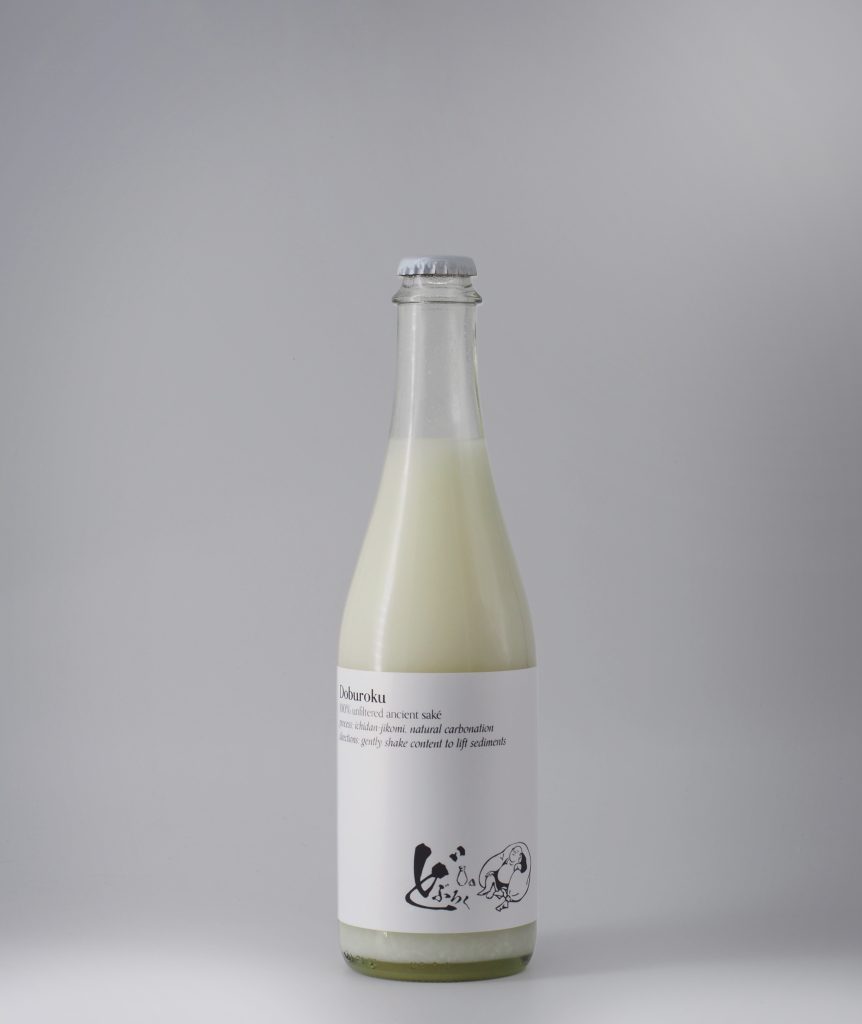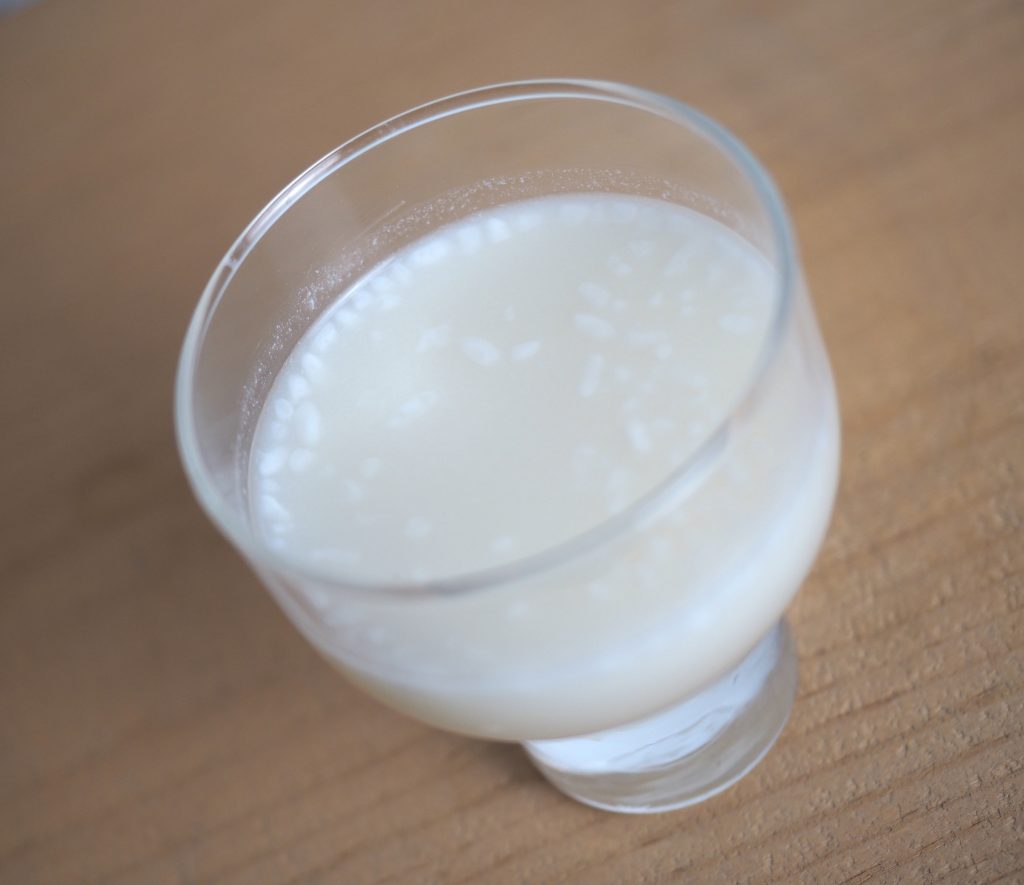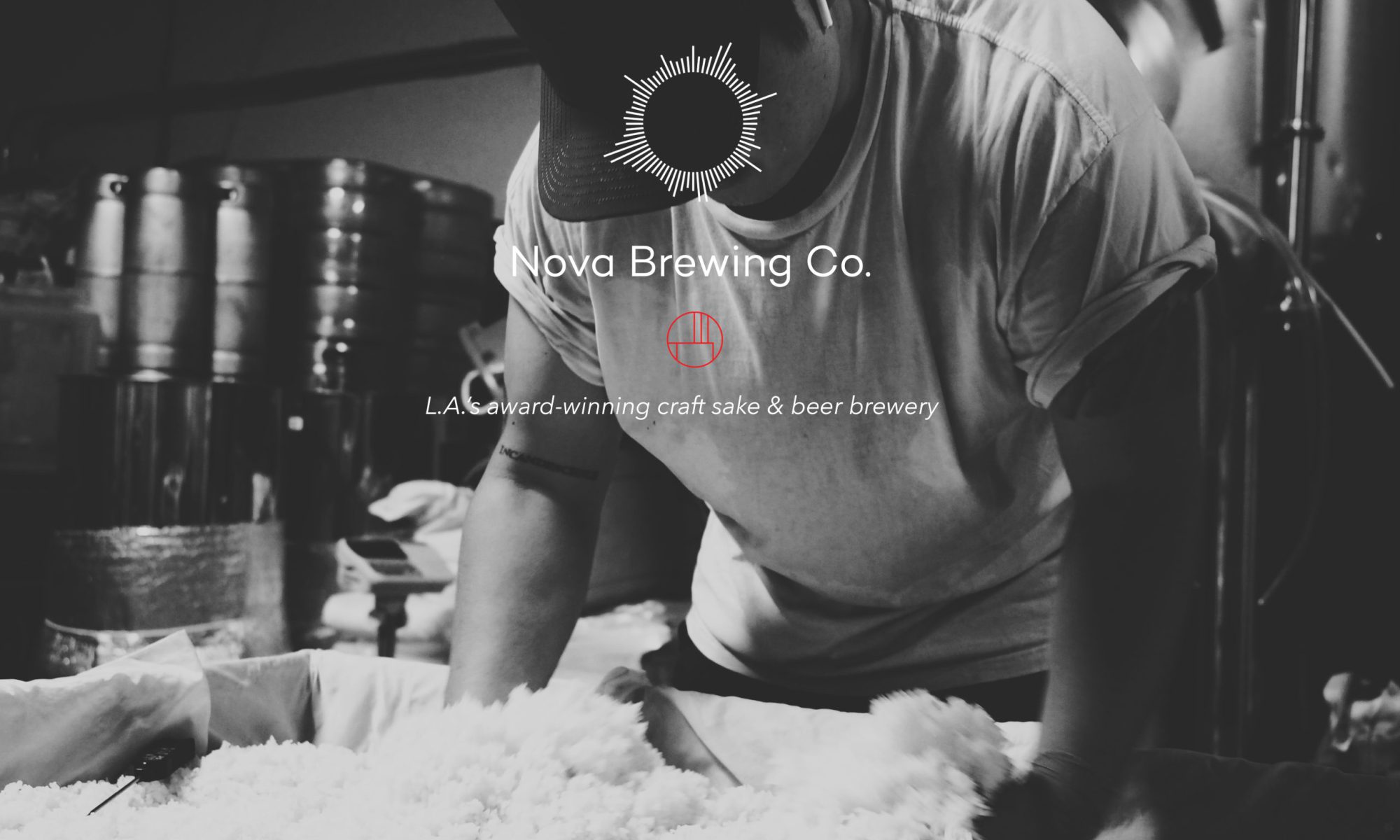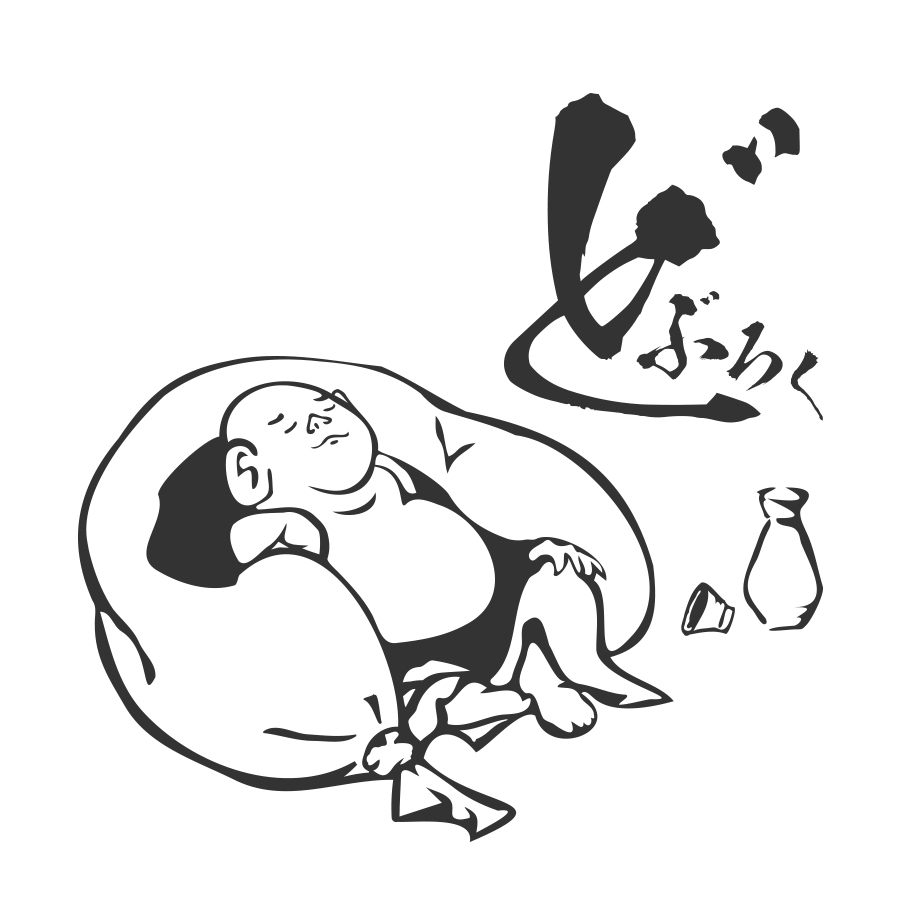DOBUROKU
An ancient style of nigori (cloudy) sake that’s 100% unfiltered and retains some chunkiness of the fermented rice. Doburoku is an ancient alcoholic drink that is illegal for home-brewing in Japan and limited to be produced by only a handful of breweries. The sake you drink nowadays that has been clarified are modern styles possible due to technology. Rice farmers long ago did not have the technology or the tools to be able to clarify sake so they would ferment rice and just drink the mash straight up. This is the rawest form of sake, a piece of history we introduce in a modern way in our own style.

PRODUCTION
ICHIDAN JIKOMI is a method traditionally used to brew doburoku. Ichidan translates to ‘one stage’ and describes the way that all the additions are added into the fermentation vessel all at once. This allows less alcohol level and more sweetness unlike modern refined sake that are higher alcohol and therefore drier. Modern sake uses three level method called SANDAN JIKOMI which is used to for our Gravity sake.
Due to the thickness and the creaminess of this beverage from rice solids that are still present, we hand-bottle our doburoku bottle by bottle in pressure-safe bottles.
James’ JOURNEY
“Bear with me because I have a lot to talk about this product. This is a product that I can say it took me about 4 years of R&D. It’s a style of sake that I fell in love with when I was in Japan 5 years ago when I was there to train as a brewer. The product that inspired me was ‘Junmai Doburoku’ by Tokyo Port Brewery (東京港酒造). When I talked to the brewer, his intention was clear that he tried to modernize this old style and introduce it to the younger generations. Basically I wanted to do the same but do it here in LA in my own style. Now, I got trained to make more premium style sake like our Gravity and Eclipse but nobody taught me how to make Doburoku. I found out making Doburoku was not as simple as going from 3 stage method (3-dan jikomi) to 1 stage method (1-dan jikomi). The rice has to break down more than you would in premium style and that was a challenge working with Californian rice, Calrose which is harder than Japanese sake rice. Also, because the sake is unfiltered, selling it nama (unpasteurized) was a huge issue as it is impossible to naturally stop the fermentation and it’ll keep fermenting in the bottle and explode. Which was why we never released it for to go. Also, if Doburoku ferments for too long, it becomes too dry and will taste super boozy, bitter and unbalanced. I personally felt sweetness is a necessity in this style to taste good. Another thing I wanted was that natural bubble from fermenting in the bottle to balance out the sweetness and make it more…for a lack of better words, crushable. Over the years at Nova, I experimented fermenting with beer yeasts which are generally weaker than sake yeast to stop the fermentation at lower ABV, I experimented fermenting at different temperature, different water levels in the rice, different water levels in the tank, adjusting rice and koji ratios, using different types of koji, we tried packaging it in all kinds of bottles and cans, and even experimented making it with fruits and koji grown on cacao nibs. I even went on a Doburoku research trip to Japan a couple years ago where I visited some new Doburoku breweries popping up, and sought out Doburoku on sale and tasted over 30 brands (I lost count and even got tired of drinking Doburoku). I learned from that trip that Doburoku really has no limits to what it can be. The alcohol can range from 4% to a whopping 22%, super sweet to super dry, some even pink colored from the type of yeast they used, some with red beans in it, some with fruits in it, some with hops (yes the ingredient that’s heavily used in IPAs), some with a lot of rice pieces in it and some where rice has been crushed to make it more thicker and creamier, some with natural bubbles some with no bubbles and etc. I realized this gives me a lot of freedom to make Doburoku the way I want and can have fun with it. Last year, we were busy upgrading our equipments to increase production of our Gravity and Eclipse to distribute to San Francisco and Las Vegas so I didn’t have much time to do much R&D of Doburoku except the Doburoku Kuro we made with all black koji. Last year I got many requests from customers to sell them our Doburoku bottles that were meant for tasting room only. Honestly, not only the risk factor of exploding bottles, but for me it was not a finished product and I wanted to work on the recipe more before I released it for sale officially. I loved this style so much that I wanted to do it right and release it when I made the Doburoku of my dreams. Well, I came home last night after long day of work and did tasting for quality check and next thing I know I downed 2 bottles and thought to my self, this is my favorite Doburoku ever. I was able to make the Doburoku of my dreams, with the help of my team at Nova.”

SAKE?
In Japan, saké (pronounced sah-kay) is actually not called sake, and sake means ‘alcoholic beverage’ in general including beer, hard liquor, wine, etc. Sake is actually called ‘nihonshu’ or ‘seishu’ that refers to clarified sake by press filtering. ‘Seishu’ directly translates to clear sake so doburoku cannot be called so, but it is considered a nihonshu in a subcategory of nigori sake. In the US, sake is recognized by the government as a term that defines any Japanese alcoholic beverage made of rice. Therefore, doburoku is sake.
CARBONATION
Doburoku comes in many forms: puréed, still, carbonated, pasteurized, unpasteurized, etc. Our Doburoku is non-puréed, pasteurized once to avoid exploding of the bottle, and naturally carbonated in the bottle to offset the sweetness and the thickness which we achieved in our pressurized bottle.
MR. NONBE
The man on the label we’re calling him Mr. Nonbe (pronounced nohm beh). Mr. Nonbe lives a peaceful and relaxing life in the countryside drinking Doburoku after a long day of rice farming which is probably not good for his health but at least he’s working hard and drinking hard and he’s happy. We don’t recommend anyone to be heavy drinker like Mr. Nonbe but hope our Doburoku brings happiness like it does to him.

